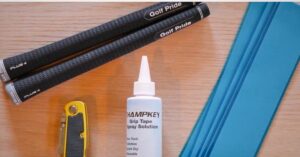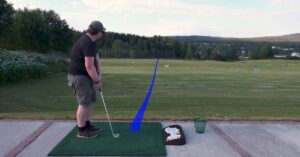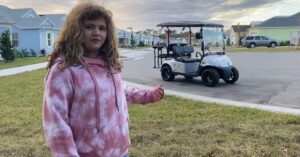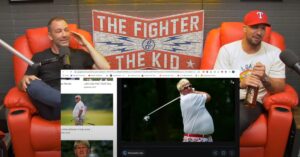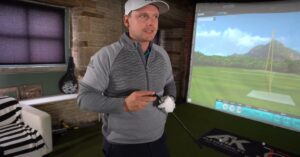How Soon Can I Play Golf After Prostate Surgery?
What’s the first question that pops up in the mind of an avid golfer after undergoing a significant medical procedure like prostate surgery? “When can I swing my clubs again?”
Indeed, for those with a deep passion for the sport, being away from the golf course can feel like an eternity. However, the general recommendation is to wait at least 6-8 weeks post-prostate surgery before returning to golf.
Golf not only offers physical activity, but it’s also an essential source of mental peace, relaxation, and social interaction. Read along to learn how to return to golf after prostate surgery confidently!
Prostate Surgery and its Implications on Your Golf Playing

Prostate surgery, despite its necessity, can be physically demanding, and recovery requires time and patience.
It’s important to understand that while your love for golf remains unaltered, your body has undergone a significant change and needs adequate rest and recovery.
You might feel ready mentally, but the strain of a powerful swing could potentially harm your healing process.
Following prostate surgery, patients often experience weakness and fatigue, which can directly impact their golf performance.
Additionally, postoperative pain and stiffness could affect your swing mechanics. Therefore, it’s essential to gauge your physical condition realistically and be patient with your body.
When Can You Tee Off Again After Prostate Surgery?

So, what is the recommended duration of a wait before resuming tee-off? Generally, it is advised to wait for a minimum of 6-8 weeks after prostate surgery.
However, this timeframe may vary based on individual recovery and healthcare professionals’ guidance.
It is important to listen to your body and gradually reintroduce the game according to your own comfort.
The Dangers of Rushing Back To golf After Prostate Surgery
Golf is a fantastic sport, but when it comes to your health, it’s crucial to take things slow.
Rushing back to the game too soon after surgery can bring potential hazards and hinder your recovery progress.
So, let’s see and understand why patience and rest are key to a successful recovery.
Unnecessary Strain on the Body
Give your body a break! Prostate surgery requires a period of healing, and subjecting your body to the strain and stress of golf immediately afterward can cause complications.
The swinging motion, walking, and bending involved in playing golf can put pressure on the abdomen and pelvic region, which may be sensitive after surgery.
Remember, your body needs time to heal and regain strength after surgery. Engaging in vigorous physical activity too soon can strain the incision area and increase the risk of complications like hernias or internal bleeding.
By allowing your body ample time to heal, you’re giving it the best chance to recover fully and avoid unnecessary setbacks.
Fatigue and Increased Risk of Accidents
We all know golf can be physically demanding, and prostate surgery takes a toll on your body. Don’t push yourself too hard, too soon!
Returning to golf without adequate rest and recovery time can worsen fatigue and weakness, making you more susceptible to accidents on the course.
Fatigue affects your coordination, balance, and reaction time, which can lead to falls or other accidents while playing golf.
Your body needs time to recuperate, and pushing through fatigue can compromise your safety and potentially prolong your recovery. So, be kind to yourself and prioritize rest during this crucial phase.
How to Safely Return to the Golf Course After Prostate Surgery?
When the wait is over and you’re ready to return to the course, adopt a slow and steady approach. Let’s explore some essential guidelines for resuming golf after prostate surgery.
Start with Gentle Stretches and Light Cardio
To kickstart your return to golf, begin with gentle stretches and light cardiovascular exercises. Stretching helps warm up your muscles, improves flexibility, and reduces the risk of injury.
Engaging in light cardio activities such as walking or cycling helps improve your cardiovascular endurance gradually.
Take your time with these activities, focusing on proper form and listening to your body. If any discomfort or pain arises, pause and consult with your healthcare provider before proceeding further.
These initial steps will help prepare your body for the physical demands of golf and minimize the risk of straining yourself too soon.
Gradually Progress to Chipping and Putting
As you build up your strength and confidence, gradually introduce chipping and putting into your practice routine.
These short-game elements of golf involve less physical exertion compared to full swings and provide an opportunity to refine your technique and regain your touch.
Start by practicing chipping and putting on the practice green. Take it easy and focus on accuracy and control rather than distance.
By gradually reintroducing these aspects of the game, you’ll allow your body to adapt and avoid overwhelming yourself during the early stages of your return.
Wear Proper Protective Gear and Utilize Golf Carts
When you’re back on the course, prioritize your safety by wearing appropriate protective gear.
Invest in comfortable golf shoes with good support to minimize the risk of slips or falls. Consider using a golf glove to improve your grip and reduce stress on your hands.
Additionally, using golf carts for transportation during your round can help minimize physical strain.
Walking the entire course may be too demanding during the initial phase of your return, so take advantage of the convenience and assistance provided by golf carts.
Remember, it’s okay to modify your routine to ensure a gradual and safe transition back to the game.
Listen to Your Body and Rest When Necessary
Throughout your journey back to golf, it’s crucial to listen to your body and recognize its limits.
If you experience pain, fatigue, or any unusual discomfort during or after a practice session or round of golf, take it as a sign to rest. Pushing through excessive discomfort may lead to setbacks in your recovery.
Rest and recovery periods are essential for your body to heal and rebuild strength.
Don’t hesitate to schedule rest days between practice sessions or take breaks during your round if needed.
By honoring your body’s need for rest, you’ll maintain a healthier balance and avoid overexertion.
Expert Advice and Professional Perspectives on Returning to Golf after Prostate Surgery
Prostate surgery can be a daunting experience, and the idea of returning to the golf course can seem even more challenging.
However, many professional golfers have successfully navigated this journey and have valuable advice to share.
Tom Lehman, a professional golfer who underwent prostate surgery, underscores the importance of patience in the recovery process. His mantra was not to rush back onto the course.
Instead, he prioritized his health, took the necessary time for recovery, and gradually eased back into the game. This careful approach allowed him to continue his professional career with minimal impact on his performance.
Another professional golfer, Arnold Palmer, also experienced prostate surgery. He advocates for a proactive role in the recovery process. This includes thorough communication with medical professionals and developing a comprehensive understanding of the surgery and recovery process.
Palmer emphasized the need for an active role in rehabilitation, encouraging other golfers to engage with physical therapists and medical professionals to create a personalized recovery plan.
Engaging with a physical therapist is often a key recommendation from professionals. Physical therapy can help regain strength and flexibility lost during recovery.
A personalized rehabilitation program could include exercises to strengthen the core and lower body, which are critical for a powerful golf swing.
Additionally, balance and coordination exercises could help golfers regain their precision and accuracy on the course.
However, every golfer’s recovery journey is unique, and what works for one might not work for another.
Factors such as age, overall health, and the complexity of the surgery can significantly impact the recovery timeline and process. Hence, the emphasis is always on individualized care and caution.
The stories of professional golfers who have undergone prostate surgery provide hope and a roadmap for others facing a similar situation.
The common threads in their advice – prioritizing health, practicing patience, and proactively engaging in the recovery process – are invaluable for those eager to return to the golf course post-prostate surgery.
Final Words
In conclusion, the journey back to the golf course after prostate surgery is one that needs careful planning and immense patience.
Remember, golf is a game of resilience, and your body needs the same resilience to heal.
While the wait may seem long, the joy of returning to the game will make it worthwhile.


